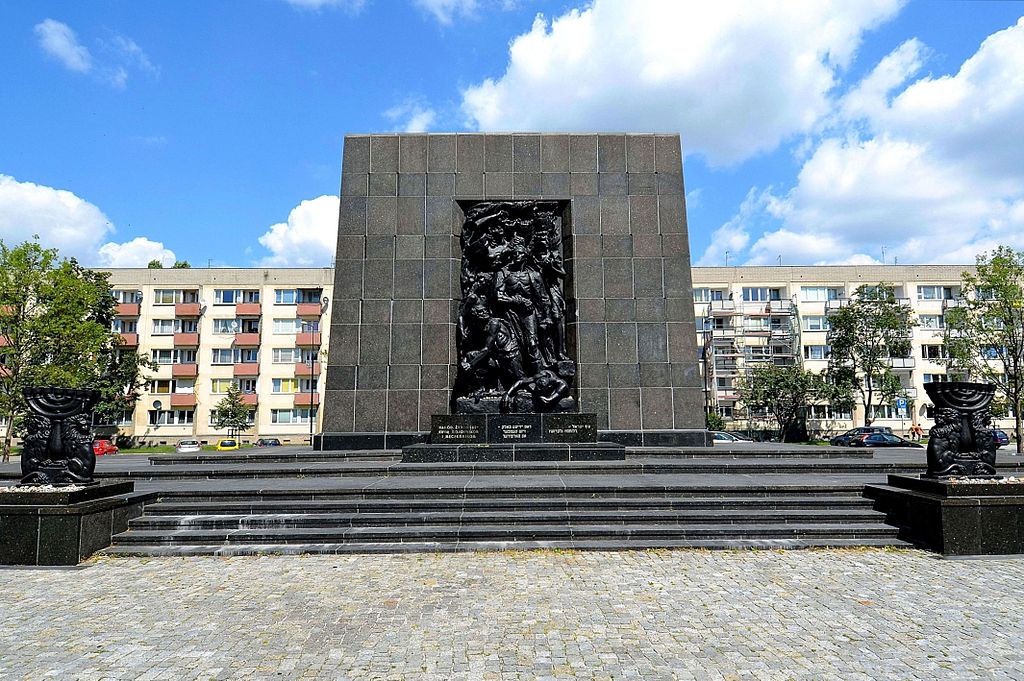“My life's dream has come true; I have lived to see Jewish resistance in the ghetto in all its greatness and glory”
Mordechai Anielewicz, commander of Jewish Combat Organization
Even under conditions of total and planned genocide, many ghettos had an organized anti-Nazi underground. It also existed in the largest ghetto in occupied Europe, Warsaw.
In March 1942, two political parties – the Polish Workers' Party and the Jewish Socialist Party “Poalei Zion” – formed a united front against fascism and the Nazi occupation authorities, called the “Anti-Fascist Bloc”. The bloc soon brought together representatives of the Zionist, Communist and Socialist Jewish parties. Among the initiators of the bloc was the future head of the Jewish fighting organization, Mordechai Anielewicz. The members of the bloc, especially the representatives of the left movements, did not hide their intention to join the Soviet guerrilla units, which they saw as allies in the fight against the Nazi occupiers. However, when the Germans detained several members of the Communist Party on the “Aryan side”, the bloc was liquidated.
On July 22, 1942, the Nazis began large-scale deportations (the “Great Action”) from the Warsaw Ghetto to the Treblinka extermination camp. To resist the Nazi actions, members of the Jewish youth movements created the Jewish Combat Organization (Żydowska Organizacja Bojowa, ŻOB). In September 1942, the organization increased in number and established contact with the Polish underground, which provided weapons and explosives. M. Anielewicz, 23-year-old representative of the Zionist scout institution Gashomer Gatsoir, was appointed commander. The organization's headquarters were located at the intersection of two streets – Mila and Zamenhof, which was of strategic importance for the location of combat units and the future “shelter” during the uprising in the ghetto.
The first significant step of the ŻOB was to develop tactics for the ghetto Jews, who managed to survive the so-called “Great Action”: “cleansing” the ghetto of traitors, raising funds to purchase weapons, informing Jews about the ultimate goal of the Nazi policy of extermination. The ŻOB planned a public protest accusing the Jewish police of collaborating with the Nazis, but this action did not take place because of the second wave of deportations from the Warsaw Ghetto on January 18, 1943. The ŻOB members had to act spontaneously. influenced a certain stop of the “action”. Human losses within the organization led to a change in the tactics of its activities: it was decided to fight inside the buildings in order to prevent the death of colleagues.
On April 19, 1943, on the eve of the Jewish holiday of Passover and, at the same time, Hitler's birthday, Nazi General Jürgen Strop arrived in Warsaw to carry out an action to finally deport Jews. The ŻOB and the Jewish Military Union, formed from former members of the Polish army, launched an uprising in the Warsaw ghetto that lasted almost a month. The rebels used ghetto buildings and bunkers as barricades from which they fired. Soon the Nazi troops found the rebels' bunker and called on them to surrender; they refused. Then the Nazis used gas and started burning the ghetto. Realizing the failure of the uprising, one of the ŻOB leaders, A. Wilner, urged the rest of the combatants not to surrender alive to the Nazis. Anelevich and several other insurgents refused to do so and eventually committed suicide (according to some reports, they suffocated in the building). The final chord of the uprising in the ghetto was the burning of the Great Warsaw Synagogue on the Tlomatskaya street on May 16, 1943, which was one of the locations of the armed struggle. Surviving ghetto Jews were soon deported to Treblinka.
The rest of the ŻOB fighters survived, but later took an active part in the Warsaw Uprising of 1944. Their heroic example inspired the Jewish population in other ghettos and concentration camps to continue the armed struggle against the occupiers.
The Museum Library encourages a detailed acquaintance with the history of the Jewish Combat Organization, in particular with the resistance in the Warsaw Ghetto:
- Bozhikovsky T. The heroic struggle of the Jewish insurgents in Warsaw: The story of a participant in the fighting in the Warsaw ghetto. Revival. 1975. № 4–5. P. 186–193.
- Lazar-Litai H. Uprising of the Warsaw Ghetto. Jewish military organization Zh.Z.V. in the Warsaw Ghetto Uprising. Israel: YaIR, 1991. 364 p.
- Grupinska A., Jagielski J., Szapiro P. Warsaw Ghetto: Warsaw Ghetto. Marki: PARMA * PRESS, 2011. 96 p.
- Pamiec: Historia Zydow Polskich przed, w czasie, i po Zagladzie / Tych F. Warszawa, 2004. 224 p.
- Paulsson G.-S. Utajone miasto: Zydzi po aryjskie stronie Warszawy (1940–1945). Krakow, 2007. 384 p.
- Resistance: Spiritual Resistance, Revolt, Partisans, and the Uprising in the Death Camps. Yad Vashem, 2004. 88 p.

